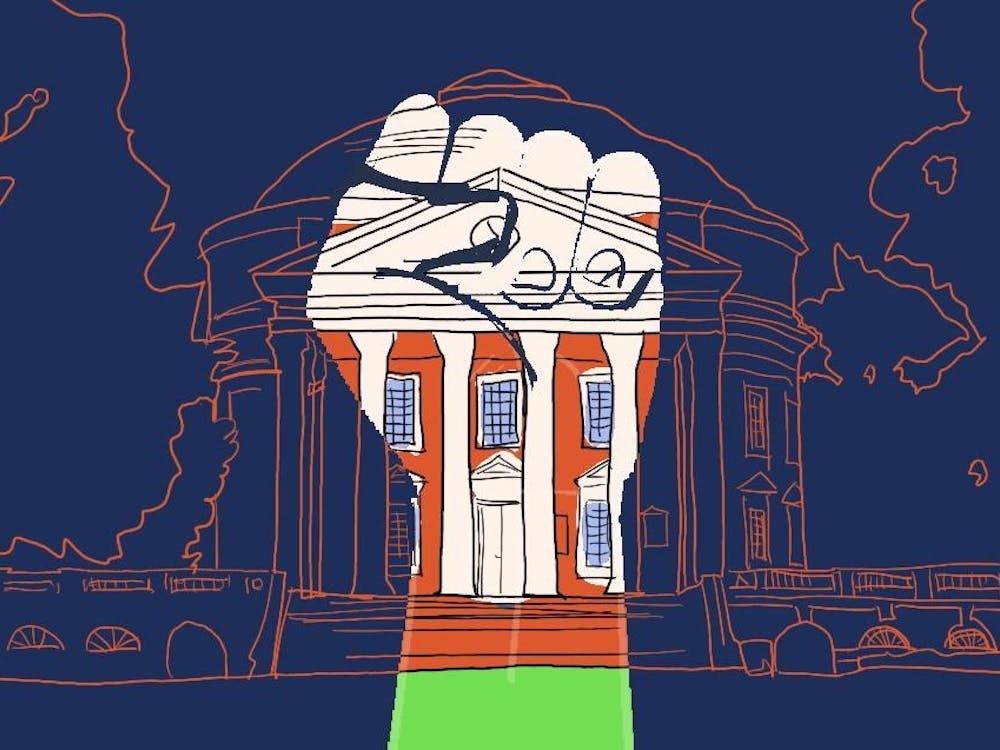Just as quickly as it came, the warm embrace of “syllabus week” has passed. While students are typically bombarded with the same class policies about lying, cheating and stealing, this semester there was one notable addition to many syllabi — ChatGPT. Although ChatGPT was launched only in December, its arrival has dominated discourse in education. Teachers and parents have rushed to declare the English class and even the college essay dead. In response to growing concerns, the school districts of New York and Seattle banned the so-called "cheating device," with Fairfax County following suit in January. Although uncertainty within academia is understandable, the alarmist rhetoric and outright bans are shortsighted. We must begin to realize ChatGPT’s capability as a teaching tool both at the University level and beyond.
ChatGPT is the latest release from the artificial intelligence company Open AI. A conversational chatbot, ChatGPT uses machine learning techniques to produce thoughtful responses to requests. OpenAI gives several examples of potential uses for the program on the site's homepage — from asking ChatGPT to explain quantum computing in simple terms to requesting a list of ideas for a ten-year-old’s birthday party. While it may be easy to dismiss the program as just hype, it is hard to deny its successes, as it managed to both pass an MBA exam and even help write legislation. Just spend a couple minutes playing around with the user-friendly software and you will be astounded by its capabilities.
Its capability has fueled fears that cheating will be an inevitable consequence of widespread access to this AI. While it makes sense that many districts' first instinct would be to block ChatGPT, this simply is not feasible. Schools can ban the AI on school-owned electronics and even the wifi system, but students have their own phones and computers. Even if they do not, it does not take a person with a tech background to access a VPN — allowing students to circumvent any safeguards put in place by administrators. There have been developments to solve the threat of cheating, including GPTZero, an app created by a current Princeton student which claims to be able to detect whether a text was AI produced. However, just changing a few words of an AI-generated text easily fools the software. And with Microsoft recently investing $10 billion into ChatGPT, it does not seem like a war of attrition is an option. AI is here to stay — and it’s only getting better. Even if a program like GPTZero could detect AI writing with perfect consistency, it would be stuck in a game of catch-up with ChatGPT and other developing programs.
Instead of running from it, why not use it? When used correctly, ChatGPT can be a revolutionary tool in the classroom. For starters, it could help level the playing field by aiding students who struggle to translate their ideas into prose, especially those with learning disorders like dyslexia. One of ChatGPT's most valuable features is its ability to digest difficult concepts into easily understood terms, effectively turning the program into a personal teaching assistant. This would prove particularly beneficial to students who have trouble processing information at high speeds in a lecture setting. ChatGPT can supplement learning by providing the user with a conversational partner to talk through difficult concepts. If embraced, ChatGPT would quickly become a go to tool for students with SDAC accommodations, helping to promote "access and inclusion" at the University.
It is not just students with learning accommodations — this technology has the potential to benefit everyone. ChatGPT is a chatbot, meaning that its primary function is to engage the user in conversation. In practice, this means English second language learners would always have a practice partner. Need someone to debate? ChatGPT's ability to give all sides to an argument makes it the perfect partner. The Generative Pre-Trained Transformer software lends itself to developing points and counterpoints, which teachers could use to help strengthen students' arguments. While there is no replacement for learning from or debating with another human, that is not always an option for all students — particularly those who prefer to work remotely. ChatGPT would always be available to help supplement learning.
The biggest concern among University faculty is what the advent of ChatGPT would mean for the Honor system. It is fair to wonder how a program that can write its own essays could coexist with the University's rich history of academic honesty. But innovation and Honor coexist in every corner of the University. Calculators enabled greater advancement in math. The da Vinci surgical robot is used in our medical school. The reality is that these tools can be used to help students achieve more and reach greater heights.
Universities have been drivers of innovation for centuries. Both the Internet and GPS originated at MIT. Modern seat belts were envisioned in a lab at Cornell. And the notion of an Academic Village — well, you know where that started. We must embrace innovative concepts, not fear them. And ChatGPT is no exception.
Dan Freed is an Opinion Columnist who writes about Academics for The Cavalier Daily. He can be reached at opinion@cavalierdaily.com.
The opinions expressed in this column are not necessarily those of The Cavalier Daily. Columns represent the views of the authors alone.







